The Walking Dead: Differences Between Comic Book and TV Show
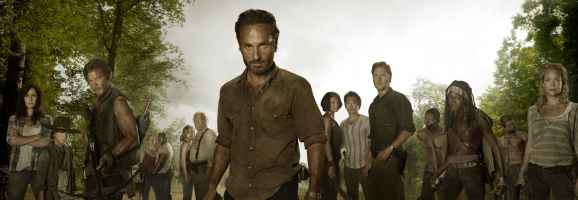
The Walking Dead is a comic series started by Robert Kirkman, Tony Moore and Charlie Adlard in 2003. It is still running today and has spawned two video games, books and a popular TV series by AMC. The comic follows Rick Grimes (played by Andrew Lincoln), a police officer hospitalised just before the zombie apocalypse. Rick wakes up and discovers the world has ended, then vows to find his wife and son amongst the chaos. From this starting point Rick has travelled across the east coast of America meeting many challenges amongst the way, not all of them from the living dead.
The TV series has gained high audience figures and praise from critics, though has not been able to translate this into big award wins. Spoilers are abound for both the comic and TV series. You have been warned.
Rather than just being a scene for scene remake of the comic books, the TV series takes the setting and the characters and adds in new events and characters while removing others. Having Kirkman, Moore and Adlard working on the series helps as they can try out ideas they had for the comics but could not implement. The TV series has more time to flesh out characters than the comics did and allows for more supporting characters the writers wanted to include. This can completely change certain storylines and sub plots as new characters move in to take a more central role or deviate from the comics in ways that would not have been possible with the same cast.
The TV series also includes completely new events because of this. For example, in Season 1, Episode 3 Rick and the other survivors have just left one of their own behind in a zombie infested city. This character is Merle Dixon (Michael Rooker) who does not appear in the comics, yet his inclusion and interaction with Rick in the previous episode allows the audience an example of the behaviour we can expect from Rick. He remained calm at gunpoint and used his wits to turn the tables on Merle without inflicting any major damage. As the TV series creates more moments where the survivors face off against the living the audience needs this character defining moment as a guide to predict how Rick will act in the future.
As for Merle, he is left stranded as the zombies are closing in and his only option seems to be to cut off his own hand. This sadistic choice early on sets the tone for the show as one that will deal with big decisions on a regular basis, compare this to the comic books where there was only one big decision in Volume 1. The TV show proves it will be darker than the source material and teases that more new scenes are to come. Deviating from the comics so early suggests the TV series will do so regularly.
The most important difference so far between the TV series and the comics is the character of Shane, a character Robert Kirkman said he wished he had done more with. Shane (played by Jon Bernthal) is Rick’s friend and colleague, himself a police officer. At first the two versions are very similar, Shane is the leader of the Atlanta survivors as he is the most able to defend the group. Shane is also in a relationship with Lori, Rick’s wife, as she thinks Rick died when his hospital was overrun. In the comics Shane is the ideological opponent to Rick and advocates keeping the group close to Atlanta, certain they will be rescued soon. Rick keeps pushing throughout Volume 1 (from which Series 1 is based on) for the group to move on and seek shelter further from a population centre. Shane is also angry at Rick because he wants Lori to himself and believes things would have been better if Rick had “stayed dead”. The climax of Volume 1 is an argument between Rick and Shane that ends with Shane pulling his gun on Rick but being shot and killed by Rick’s son Carl.
The TV series Shane is very different, while he and Rick butt heads over several major issues in the group and often seem on a collision course over Lori he is not killed off at the end of the first season. Instead they keep Shane for the entire second season too and let him grow as a character from the cop who made the best of a bad situation to the broken survivor who abandons his humanity and becomes the darkest character in the show. Rick and Shane’s relationship does not simply deteriorate soon after meeting but goes on ups and downs as they slowly start forming their own power bases within the group. Including Shane in Season 2 allowed the writers to better explore the group and its breaking points and frame the dilemmas the group faces as another issue for Rick and Shane to argue over, each character explaining their reasoning serving as a way to explain the issue to the audience.
The show makes you see the character still had somewhere to go, Kirkman regrets killing Shane in Volume 1 and only did so because he didn’t realise how popular The Walking Dead would become. While some supporting characters faded into the background in Season 2 Shane was always at the forefront of each episode. The audience understand why he starts becoming Rick’s opponent as the change is more gradual than in the comics. The writers relish this chance to do more with Shane and we get to see him spiral out of control. For example at the start of Season 2 Shane leaves Otis, another survivor, to be killed by zombies. This begins his descent into darkness and we see this visually as he shaves his head and starts wearing darker clothes. The TV show can use costume changes to signify personality changes while in the comic what the characters were wearing normally didn’t matter. Over the course of Season 2 Shane threatens other survivors, attacks Rick in a secluded location and kills a barn full of zombies just to make a point. His character arc finally finishes with a nod to the comics, one final showdown between Shane and Rick with Carl in attendance. This difference shows how the writers can take an existing character and make them fit into plots they never appeared in and still make it work.
In addition to keeping some characters around for longer, the writers also brought in new characters they could play around with for the additional plots. One character above all others is Daryl Dixon (played by Norman Reedus), brother of Merle and a fan favourite. Daryl was never in the comics but he certainly belonged in the show and fit perfectly in the role of zombie hunter while also being able to fit his own personal issues in. This mixture of practicality and pathos meant in the more padded TV series Rick did not have to do everything important himself.
The supporting cast also changes drastically from the comics, some actors chose to leave the show and other characters were written out sooner. Dale (Jeffery DeMunn) dies near the end of Season 2 while in the comics he remains in the group for several volumes, surviving the encounter with The Governor and finally dying on the road. Fans of the comics will not have been expecting Dale to die so soon. We saw that Shane could live longer than he should have done but Dale’s death was a lesson that some characters we thought would survive won’t make it so far. As a way of keeping parallels between the comics and TV series many of the things that happened to Dale, such as losing his leg, have now been put onto Hershel in Season 3 as the writers know how to include an amputee in their setting having done it before.
Other supporting characters such as Andrea and Lori also followed different character arcs. Andrea particularly changed as a result of Shane being present for Season 2, being taught to fight by him and growing into the action girl we recognise from the comics, especially as she did not undergo this change so in Season 1. In Volume 1 of the comics Andrea takes to action very quickly, proving herself a capable shot with a gun and soon becoming a useful asset to the team. Whereas Andrea in the TV series does not experience this same growth so quickly. Though her prowess with a rifle is referenced to in the TV series as Andrea hits a target from a very long range while she is still a beginner.
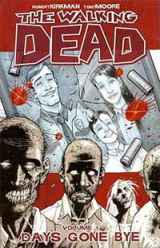
Another huge difference between the comics and TV series was the amount of time spent on Hershel’s farm during Season 2. Due to budget constraints the show couldn’t afford to keep using new locations and had to rely on lots of episodes in the same environment while the comic book moved on swiftly. Though it allowed for more development of the Greene family it slowed Season 2 to a crawl while the comics didn’t linger long at the farm. This difference in setting took the focus off Rick Grimes and had to give everyone their moment in the spotlight just to pad out the episodes. Season 1 could do this with much greater efficiency as it only had half the episodes to fill with the same amount of source material and plots involving the new or better developed characters could be included without distracting from the overarching plot of the season.
The Walking Dead is at its heart a story about one man, Rick Grimes. Over many volumes of the comic he is subjected to horrors and torture both physical and psychological. Though each member of the cast goes through their own journey of discovering the limits they will go to the focus is always kept on Rick. He is the main character and we know he has what it takes to get through the apocalypse for now. But while the TV series Rick is still the main character there is too much time spent on others to really say the show is about him, it is about the group that Rick leads. For all the differences between the comics and TV series Rick is not different, he may act differently but he is still the same character, and The Walking Dead is a show about people doing things and making decisions, the zombies are just there to provide conflict.
What do you think? Leave a comment.
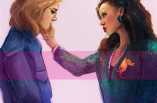
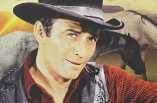
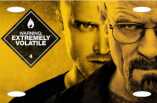



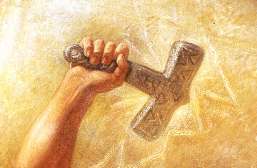
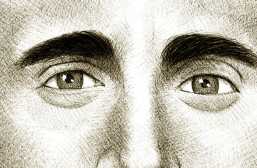
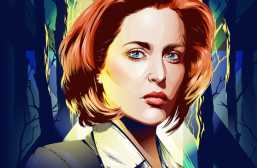
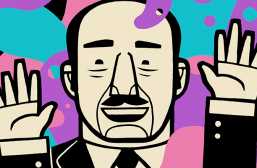
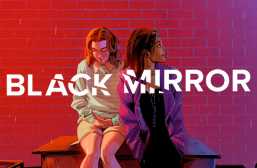
(SPOILERS) I am disappointed in Andrea’s death. I feel it was pointless and a result of writers not really knowing what to do with Andrea. Maybe the actress is partly to blame, I don’t know, but I consider it a bit of a letdown there. Like her or hate her, I think the writers weaknesses were to blame. Why make such a big deal about her dealing with her sister, trying to commit suicide, become a superb shot only to waste season 3 without seeing her really shoot, and go through the gauntlet with the cat and mouse with the governor in the abandoned factory, come into her power, only to become an act of ultimate futility by being captured and dying in Woodbury at the end? Just sloppy to me.
I think they got caught between comic Andrea and what they were trying to do with TV Andrea. Rather than being decisive about what she was I think they dithered and tried to pick and choose character traits.
For me, the comics are much better than the show. I still like the show, but after watching Season 2 I became very annoyed with all the characters. I didn’t find myself liking one particular character at all. The show grabs me by the zombies and the brutality, not the characterisation.
Good article too. Very in depth with the comparisons.
Season 2 had the same budget for double the episodes and a larger cast. They had to economise on something, even if it meant packing several Volumes worth of characterisation into one Season.
I suppose by spending too much time with the characters you may start to resent them as the writers need to make them do (often illogical) things to keep the story going *cough* Lori *cough* Carl *cough*
I think the characterisation is far stronger in the comics than television – but try telling a TV only viewer that. All I hear is how great the characters on the show are, but I think they are flat, one-dimensional beings.
I wouldn’t go that far, some of the characters are well rounded (Rick, Daryl, Shane, Glenn) though that’s because they get all the screentime so they can have those moments of characterisation.
The show has become more concentrated on a small cast of main characters who do everything and the rest of the group just hangs around on the edges, getting a look in once in a while.
The comic did balance things better and let everyone do something.
I have to agree with this (not sure about how they are in the comic though, as I haven’t read it yet!).
I felt like the only person who didn’t like the show (especially for that reason!). Unfortunately, I’m not a fan of the zombie genre and so, the characterisation was the only thing that was really going to keep my interest, I suppose, and it just… really didn’t. I was bored and frustrated more than anything.
To be fair though, I’ve only watched the first season and so I feel I should watch the second one to give it more of a chance. I just don’t see it changing? If anything, I can sense my frustration levels would increase, which seems to be supported by a few people I have read the opinions of!
Still, funnily enough, it perked up my interest in getting the comic, and so I’m glad to read a comparative article about it as well. I think I’ll just seek out the comic for now and see how that goes instead.
Nobody will judge you for not liking the show. It isn’t everyone’s cup of tea.
Nice to hear you’re getting into the comics, they’re excellent.
Nice comparative essay here! I really rate the characterisation in the TV show, especially the way the Carl-Rick relationship is going. Hoping that season four will spend more time on Tyreese etc though!
i really liked the tv show so far though yeah the first half of season 2 was a drag…i want to read the comics though i don’t know how they could be better without daryl whom i liked best..could anyone here tell me how much of the comics have been used by the end of season 3..i mean till which issue
Em not sure exactly sorry, but I just started reading them myself and I have just started volume 5 and that has no Governer involved as of yet, I think maybe volume six or seven, If i’m wrong anyone feel free to correct me. I don’t want to read further then where it is up to in season 3 though as I don’t want season 4 to be spoiled for me.
Sorry for the late response, Season 3 starts to deviate from the comics a bit more than Seasons 1 & 2. The end of Season 3 would take you to about volume 7/8. They’ve basically done most of the things that happen in the first compendium.
Good article! I have started reading the comics and I have seen how differently they changed. Especially Volume 3 and the time spent at the prison. I am trying to only read up to the end of season 3 in the comics as I don’t want to be spoiled, do you know where that would be in the comics? Personally, I like the TV show branching off in different directions from the comics it provides new insights and different plot lines that i find really interesting. Anyway good article.
I’d recommend you read up to Volume 7 of the comics. If you don’t want spoilers then I’d advise you not to read Volume 8 yet; even though it is one of the best ones they’ve done.
I appreciated that the TV series brought the Governor story arc back to such a similar stand-off at the prison as the graphic novel. Something I think they did better on the show than in the comics (gasp, I know) was to develop the concept of growing hope at the prison–having Rick become a peaceful farmer, for example. This lent greater gravitas to the prison stand-off with the Governor that the graphic novel simply did not have.
I’m curious: how do you think they will handle Negan’s foul mouth in the TV series once they finally catch up?